| Community News April 2008 |
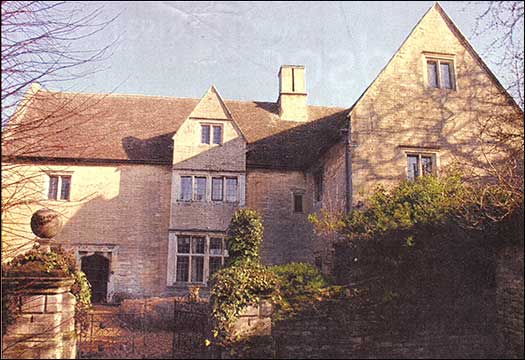 |
House survives the passage of time
The impressive building that stands on the corner of Midland Road and Wood Street, Higham Ferrers, is the Manor House.
Taking up an area of almost10,000 sq ft, the L-shaped Elizabethan building is believed to stand on the grounds of previous incarnations, probably dating as far back as 1086.
Some facts are known about the building and its occupants. Following the Norman invasion, William de Ferrers stayed in Higham and by 1237 had claimed the benefits of the Manor. The next licence holder was Henry, Duke of Lancaster, who reclaimed the benefits in 1354. One time owner of Sulgrave Manor, Laurence Washington, was also a leaseholder.
The current building is made from local stone and inside it still has carved English oak fire surrounds and the doors, floors and beams are all made out of solid oak.
In more recent times, in 1879, the Crew family, a family of doctors, lived in the house. By the turn of the century, it had changed hands again and in 1913 ownership passed to the Horrell family.
In 1954, the house was presented to the board of directors of the then flourishing company W W Chamberlain but, like so many industries associated with the footwear trade, the company disappeared leaving just one survivor to look across that corner of Higham - the Manor House. |
|
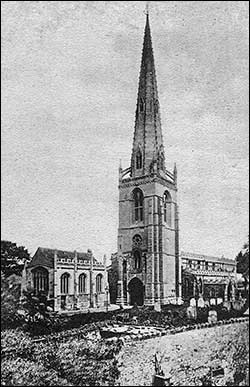 |
Higham Ferrers Parish Church c1904
A postcard by Samuel Powell of Rushden
|
|
| The Northampton Mercury, 8th April 1776
The Rev Christopher Ellershaw begs Leave to inform the Public, That he purposes opening the SCHOOL at Higham Ferrers, in the County of Northampton, on Monday the 15th instants, for the Education of YOUTH, who may be instructed in the English, Latin, and Greek Languages, and also in Writing and Arithmetic in all Branches, upon the most ease and moderate Terms.
Such as are pleased to countenance his Plan, and entrust their Children to his Care, may depend upon the strictest Attention being paid to their moral, as well as literary Accomplishments.
|
During the 1880s, when its neighbour Rushden was expanding rapidly with the mechanisation of the shoetrade, Higham grew slowly, and so retains many of its old stone buildings. A great fire took place in 1882, when 25 thatched cottages were destroyed at the south of the village.
|
|
|
A mill stood on this site since the Domesday book, between Higham and Irthlingborough.
|
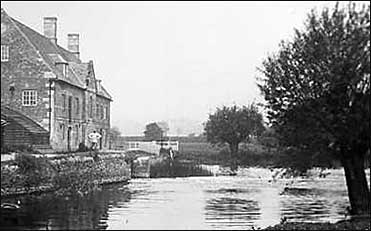 |
|
Postcard of Chown's Mill
|
The Chown family owned it for several generations.
Later it was used by the Mill Chrome Tanning Company.
|
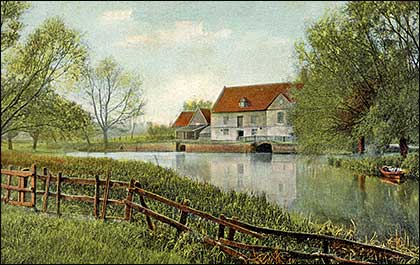 |
|
Chown's Mill from a postcard
|
|
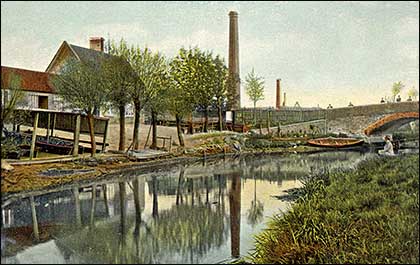 |
|
Higham Wharf from a postcard
|
|
The wharf would have been a very busy place until the railways brought a new faster way of bringing in goods.
This picture also shows the kiln chimneys of the old brickworks.
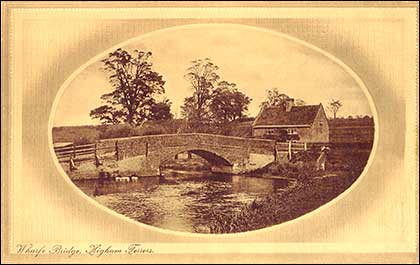 |
|
Higham Wharf and bridge
|
The Anchor Inn stood on the river bank and would provide refreshments for the boatmen.
The inn and the bridge have both been demolished.
|
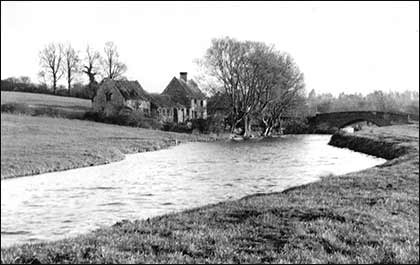 |
|
Higham Wharf in derelict state
|
|
| The first railway station serving Higham Ferrers was on the Blisworth to Peterborough line, and was on the north side of the village. The building stood on the boundary of Chelveston parish, close to Irthlingborough bridge. This was an isolated position ablout half way between the two villages of Irthlingborough & Higham Ferrers.
A new railway branch line from Wellingborough to Rushden & Higham Ferrers was proposed in December 1888 by some businessmen, unhappy with existing railway links. The boot and shoe trade especially was growing rapidly and needed regular supplies for manufacturing, and to transport finished goods.
|
|
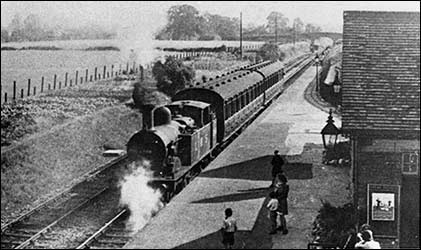 |
|
The train arrives from Rushden
|
|
The closest stations at that time were at the old Higham station near Irthlingborough and the one at Irchester. The Midland Railway were asked to consider a loop line, with a station at Rushden, passing by Higham Ferrers, and on to the station at Raunds, the latter being on the line from Kettering to Cambridge.
The company recommended this to their shareholders which was accepted. The original 1889 plan was revised to include a station at Higham Ferrers, the proposals submitted to Parliament, and passed on 25th July 1890.
|
|
|
| In the 1880s great strides were being made in health and welfare. Clean water was urgently needed, as Rushden grew and the mechanisation in the shoe trade brought people into factories to work, and this brought an influx of people into the town putting pressure on providing housing. The houses needed proper drainage if illness was to be prevented. Gas supply and water services were jointly supplied for Rushden & Higham Ferrers: see under Public Utilities in Rushden Commerce section. For health and welfare after 1834 when the new "poor law" was brought in, Higham Ferrers was under the Wellingborough Poor Law Union, and sanitary services were dealt with by the Wellingborough Rural Sanitary Authority. A county Medical Officer's health report for 1915 gives some information on Higham Ferrers. |
| In the late 1930s John White moved his shoemaking company headqaurters from Rushden to Midland Road at Higham. He was a Mayor of the borough, and he built the bungalows in John White Close. |
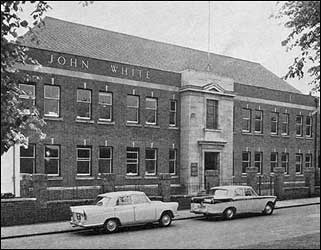 |
|
The John White Headquarters
|
|
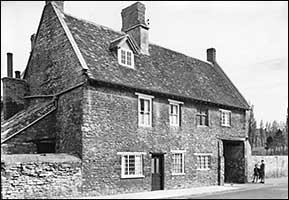 |
|
Archbishop Chichele's traditional birthplace c1940s
|
The picture above of the traditional birthplace of Archbishop Chichele was taken in the 1940s. Under the arch way is a street sign "Bedford Row". The land behind the stone wall is still clear. By the 1960s (right) the Co-op had built a store to supply the new housing estate built just after WWII.
|
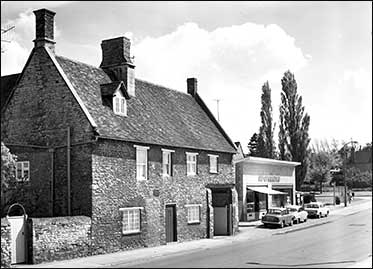 |
|
The house where Henry was born - taken in the 1960s
The lean-to has gone, and a plaque to Archbishop Chichele added left of the door.
|
|